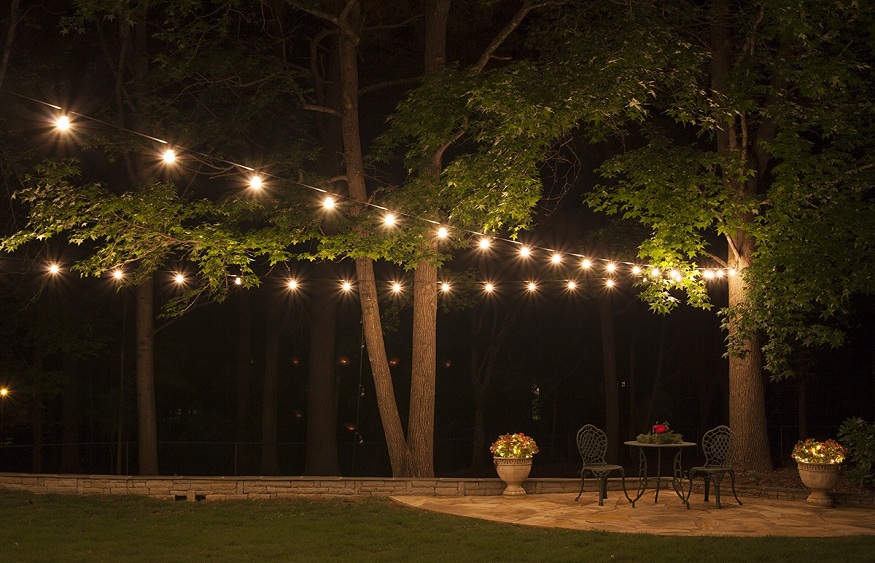When it comes to enhancing the ambience and security of your outdoor space with lighting, there are some crucial factors you need to consider before you start the installation process. To ensure that your outdoor lighting project is a success, let’s take a closer look at these important aspects:
Outdoor Lighting Types
Before diving into the installation process, it’s essential to determine the type of outdoor lighting that best suits your needs. Each lighting type comes with its own unique requirements, so be sure to consult the included manual for specific instructions.
Pro Tip: For a comprehensive understanding of the different outdoor lighting types, check out our Outdoor Lighting Guide.
Local Regulations
Your enthusiasm for outdoor lighting should be tempered with an awareness of local laws and regulations, especially if your project involves significant digging and landscaping. To avoid any legal or safety issues, consider contacting services like Call 811 or Dig Safe, which can guide you through the necessary permits and procedures for home improvement projects like installing a fence, deck, or even planting trees.
Low-Voltage Landscape Lighting Requirements
For low-voltage landscape lighting, you’ll need a transformer that can be plugged into an outdoor electrical outlet. These transformers convert the standard household voltage of 120 volts to a safer 12 volts, suitable for landscape lighting. To ensure your transformer can handle the load, calculate the total wattage of the lights you’ll be connecting and add an extra 20% to be safe.
Power Types
The power source for your outdoor lighting depends on the type you choose. Hardwired fixtures, for instance, require more complex installation and may involve running power lines through your home’s walls. In such cases, it’s advisable to work with an electrician and buy products from a well known electrical manufacturing company. If you’re opting for solar or low-voltage landscape lighting or simply replacing an existing light fixture, you can follow the installation steps outlined below.
How to Install Outdoor Lighting
Once you’ve selected the appropriate outdoor lighting type for your space, follow these step-by-step instructions to install your fixtures. We’ve included installation guidelines for various outdoor lighting types, including landscape, wall, and ceiling lighting.
Installing Landscape Lighting
Landscape lighting often comprises small pathway lights that are staked into the ground. You can find both solar and LED Light options to match your preferences while considering safety and style. These lights can be used to line pathways, driveways, or complement your landscaping design.
Solar Landscape Lighting
Step 1: Assemble Lights
Follow the manufacturer’s instructions to assemble the solar lights. It’s also a good idea to expose the lights to sunlight for a day before installation to identify any malfunctions.
Step 2: Determine Layout
After sunlight exposure, position the lights on the grass where you intend to install them. Keep them approximately 6 inches away from the pathway and at least a foot apart from each other.
Step 3: Install the Stake
Soften the installation area by pouring water on it to prevent the stake from bending or breaking. Then, push the stakes into the ground and attach the lights securely.
Low-Voltage Landscape Lighting
Step 1: Measure Length of Area
Measure the distance from the transformer to the intended endpoint for your landscape lighting to determine the right amount of landscape lighting wire, ensuring it can handle the transformer’s wattage.
Step 2: Turn Off Power
Turn off the power to the work area at the circuit breaker and ensure it’s completely off before proceeding.
Step 3: Mount the Transformer
Mount the transformer near the GFCI outlet on your home’s exterior, at least 12 inches above the ground. Follow the manufacturer’s instructions for wiring the transformer correctly.
Step 4: Lay the Cable
Position the cable along the path where you plan to place your lights, keeping it at least 6 inches away from the pathway. Use the stakes provided with the lights to mark the positions along the cable.
Step 5: Connect the Lights
Follow the manufacturer’s instructions to connect the lights to the cable. You may need to cut the cable, strip a few inches of insulation, twist the cable and light wires together, and secure them with waterproof wire connectors and electrical tape. Each light has two cables, one leading to the light and one continuing to the next light.
Step 6: Dig a Trench for the Cable
Dig a 6-inch trench near the cable’s placement, and ensure the lights work before burying the cable. Once you’ve confirmed they function, bury the cable and position the lights as desired.
Shop Landscape Lighting
How to Replace an Outdoor Light Fixture
Whether you’re replacing outdoor sconces, pendant lights, flush mounts, or wall lights, the following general steps will guide you through the process. Note that installation may vary by manufacturer, so always refer to the included instruction manual for specific details.
Step 1: Turn Off the Power
At the circuit breaker, turn off the power to the work area.
Step 2: Remove Existing Fixture
Use a drill to remove the existing mounting plate and light from the wall. Disconnect the wires by unscrewing the wire connectors and wire ends.
Step 3: Replace Mounting Bracket
Install the new light fixture’s mounting bracket securely by drilling it into place.
Step 4: Connect Wires
Identify the different wires: black or red (hot), white or gray (neutral), and ground (usually green or bare copper). Secure the grounding wire from your wall around the green bolt on the new mounting plate. Connect wires with matching colors together, ensuring a secure connection with wire connectors and electrical tape. Tuck all wires into the junction box.
Also, make sure to choose the best wire.
Step 5: Install the New Fixture
Attach the new light fixture to the mounting bracket using a screwdriver or provided hardware.
Step 6: Seal Gaps
To seal any gaps between the mounting plate and the wall, apply a bead of caulk.
Step 7: Test It Out
Insert the light bulbs and turn on the power at the circuit breaker to verify that everything functions correctly.
By carefully considering these essential factors and following the provided instructions, you can effectively install outdoor lighting that enhances both the aesthetics and functionality of your outdoor living spaces

